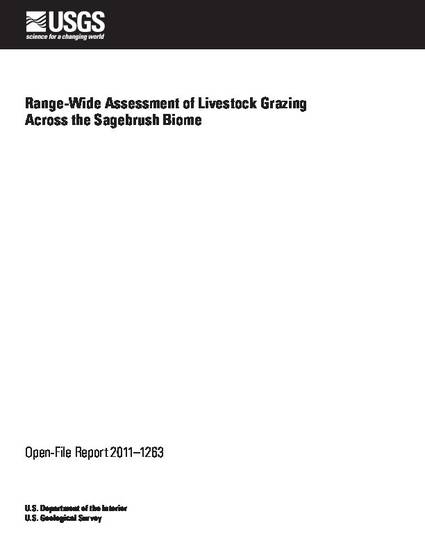
Book
Range-wide assessment of livestock grazing across the sagebrush biome
(2011)
Abstract
Domestic livestock grazing occurs in virtually all sagebrush habitats and is a prominent disturbance factor. By affecting habitat condition and trend, grazing influences the resources required by, and thus, the distribution and abundance of sagebrush-obligate wildlife species (for example, sage-grouse Centrocercus spp.). Yet, the risks that livestock grazing may pose to these species and their habitats are not always clear. Although livestock grazing intensity and associated habitat condition may be known in many places at the local level, we have not yet been able to answer questions about use, condition, and trend at the landscape scale or at the range-wide scale for wildlife species. A great deal of information about grazing use, management regimes, and ecological condition exists at the local level (for individual livestock management units) under the oversight of organizations such as the Bureau of Land Management (BLM). However, the extent, quality, and types of existing data are unknown, which hinders the compilation, mapping, or analysis of these data...
Keywords
- Geological Survey,
- livestock grazing,
- sagebrush
Disciplines
Publication Date
2011
Publisher
U.S. Geological Survey Open File Report 2011-1263
Series
Open-File Report 2011–1263
ISBN
72 pp
Publisher Statement
U.S. Geological Survey Open-File Report
Citation Information
Veblen, K.E., D.A. Pyke, C.L. Aldridge, M.L. Casazza, T.J. Assal, and M.A. Farinha. 2011. Range-wide assessment of livestock grazing across the sagebrush biome: U.S. Geological Survey Open-File Report 2011-1263, 74 p.
